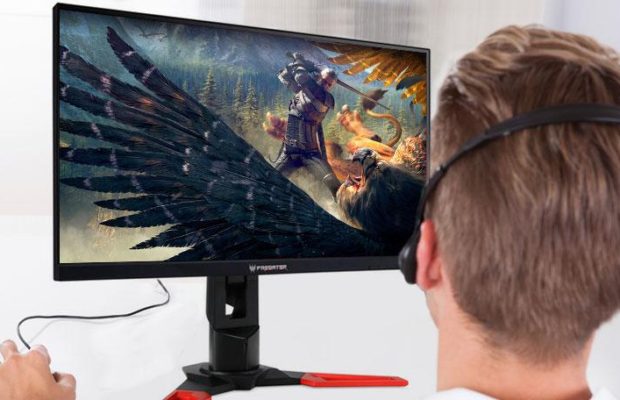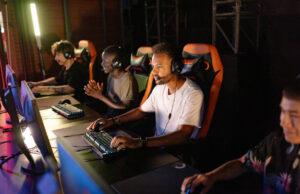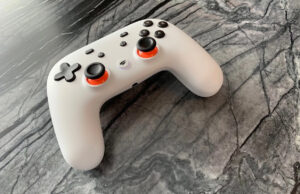A Buyer’s Guide To Gaming Monitors

You don’t need to be a dyed-in-the-wool hard-core gamer to understand that sometimes your PC hardware matters as much as your skills when it comes to winning the day. Whether you favor action games, racers, sports games, or first-person shooters, you’ll need a rig with some strong graphics capabilities to keep up with the latest and greatest games. That doesn’t just mean a decent graphics card; you also need a reliable monitor that’s free of irritating problems like motion artifacts, tearing, flicker, and blurring. If you need a little guidance to settle on the perfect gaming monitor solution, we’ll tell you everything you need to know right here.
Screen Size / Resolution
As with many types of tech, with gaming monitors, bigger is virtually always better. As long as you have enough space on your desk (or wall), you can’t beat a full-size 27-inch screen. This is big enough to past conventional HD resolution (1920 by 1,080 pixels). New 27-inch monitors often feature WQHD (Wide Quad High-Definition) which ups the maximum resolution to 2,560 by 1,440 pixels. With a higher resolution and more pixels on the screen, you’ll get a clearer, more immersive gaming experience. (Just keep in mind you still need plenty of graphics processing horsepower in order to play new games in super-high resolution with all of the visual bells and whistles enabled. For smaller spaces, you have your choice of lots of different 24-inch monitors, but at this size, you’re not going to be able to go past 1920 by 1080 resolution. At the absolute top of the line – for situations where you have both space and money to spare – you can get 30-inch monitors equipped for UHD (Ultra High-Definition) display at 3,840 by 2,160 resolution.
Technical Details
You have a range of different display technologies to choose from as well. There are benefits and drawbacks to every choice available here. Many gamers favor twisted nematic panels (TN) because of their low prices and fast refresh rates. TN panels offer poor performance at wide angles, though, introducing color shifting. Vertical alignment panels (VA) are choices that deliver superior contrast (including the deepest of deep blacks) and color performance. These panels are often plagued by ghosting problems, making them unsuitable for fast-paced games. Panels built with in-plane switching (IPS) technology are excellent for wide-angle viewing and offer high-quality color. With IPS monitors response times can suffer, leading to motion artifacts.
Pixel Response – Why It Matters
Of the technical aspects described above, pixel response and refresh rate are going to be extremely important for gaming. Pixel response rate is measured in “gray to gray” time. This measures, in milliseconds, how long a monitor takes to shift from one shade of a gray to a different one. (This replaces an older standard which measured black-to-white transition times). With lower pixel response times, you’ll get less smearing with fast-moving images and a smoother experience overall. The best gaming monitors feature gray to gray response times of two milliseconds or less, but you can reasonably go as high as four milliseconds without seeing any distracting visual artifacts.
Refresh rate is measured by counting the number of times the monitor can redraw the entire screen in a second. As a frequency spec, refresh rate is measured in Hertz (Hz). Typical LCD monitors work at a 60 Hz refresh rate. This can introduce blurriness to fast-moving images; screen tearing is also a potential problem. (Tearing occurs when the monitor ends up displaying multiple screen draws simultaneously.) A gaming monitor should feature a refresh rate of 120 Hz or better. Not only does this cut down on visual artifacts, but it’s also required for 3D display technology.
Inputs And Accessories
Your gaming monitor needs to offer flexibility in the form of multiple video inputs. Ideally, one monitor can be used for multiple systems – either multiple PCs or modern gaming consoles (e.g. the Xbox One or PS4). Dual HDMI input is the gold standard to look for in gaming monitors. If you have a particularly powerful graphics card, you might also have the option of using DVI or DisplayPort, so look for a compatible monitor. USB ports for direct connection of peripherals like thumb drives, mice, and controllers are a nice extra to look for. If space is tight, integrated speakers and a subwoofer can conserve desktop space. Don’t neglect the stand, either; you want to be able to adjust the height, swivel, and tilt of your monitor easily.
Cost
All of the variables described above will affect the price of your monitor. A 24-inch TN panel with fast pixel response will only cost you about $170, but it’s not likely to offer a lot of extra features. A bigger 27-inch gaming monitor with bonuses like multiple inputs, a USB hub, and a good stand can cost over $500. High-end UHD monitors can cost up to $3,500.













 © 2024
© 2024
0 comments